On January 17, 1945 Warsaw, the capital city of Poland, was captured by Soviet forces after more than 5 years of German occupation. I conducted an online interview with Alexandra Richie, D.Phil, to shed more light on this event and what led up to it.
Richie is a historian of Germany and Central and Eastern Europe, with a specialization in defense and security issues. She is also the author of Faust’s Metropolis: A History of Berlin, which was named one of the top ten books of the year by American Publisher’s Weekly, and Warsaw 1944, which won the Newsweek Teresa Torańska Prize for best non-fiction book of 2014 and the Kazimierz Moczarski Prize for Best History Book 2015.
She has contributed to many articles, documentaries, radio, and television programs, and is the Convener of the Presidential Counselors at The National WWII Museum. She is also a member of the Senate at the Collegium Civitas University in Warsaw, Poland, and the Władysław Bartoszewski co-chair of History and International Studies at the Collegium Civitas.
Q: Warsaw had been occupied by German forces since September 1939. The segregation of the local Jewish population into a ghetto is well known, but how was the occupation for Warsaw as a whole?
A: When Hitler was planning for the invasion of Poland he made it clear that this was going to be a completely new kind of war. According to Nazi ideology, the Poles and Jews living in the east were racially inferior beings who had taken over and defiled territories which rightfully belonged to the Germans. War against them was not to just be a war of conquest, it was also to be a war of racial annihilation to be carried out, as Hitler put it, with the 'greatest brutality and without mercy.' This would have terrible consequences for the people of Poland, and the citizens of Warsaw.
On 1 September 1939 two million German soldiers attacked Poland. With them came two thousand members of the new Einsatzgruppen and twenty one Order Police Battalions. Hitler had put Reinhard Heydrich in charge of Operation Tannenburg—the task of arresting and killing Poles whom the Security Police classified as 'anti-German elements.' His preliminary list contained the names of 61,000 people.
The Poles fought valiantly but there was little hope of holding out against the joint Soviet-German invasion and a force bent on the obliteration of the enemy. In the first large-scale terror bombing of the war Major Wolfram Freiherr von Richthofen targeted Warsaw destroying over ten percent of buildings and killing 20,000 people. The Poles were shocked by the violence meted out against civilians as they learned of the obliteration of villages, attacks against Red Cross aid stations and the strafing of columns of refugees. The Germans had already executed 16,000 civilians by the time of Hitler's victory parade through Warsaw on 6 October. It was clear that the attack against Poland also heralded a fundamental shift in the way in which Germans were to wage war in the east.
Warsaw was seen as the head and heart of Poland and as such it had to be crushed. The occupation was extremely brutal. Groups of innocent civilians were simply arrested and executed in Pawiak Prison or in the garden of the Sejm—the Polish Parliament—in order to spread terror amongst the population. Between December 1939 and July 1941 over 1,700 Poles and Jews from Warsaw were taken to the nearby forest at Palmiry and shot; pictures show women being led to their deaths still in their dressing gowns. In the spring of 1940 Warsaw was hit by another wave of arrests and murders in the so-called AB Aktion—this time it was the turn of over 6,500 pre-war politicians, attorneys, school headmasters and intellectuals to be executed. On 15 August 1940 the first group of Warsawians was rounded up and sent to a new German camp called Auschwitz.
According to the Generalplan Ost the city of Warsaw was eventually to be downgraded to rank of a small German provincial town. Its pre-war population of 1.3 million people was to be eliminated with only a few thousand to remain to serve the new German masters. The Nazis quickly took control over every aspect of life. Schools, colleges and other institutions were closed to Poles; newspapers and businesses and banks were taken over, swastika flags and propaganda posters were everywhere and fifty modern loudspeakers were installed at intersections so that orders could be barked out to the inhabitants.
For the Poles the Nazis years were ones of violence, deprivation and fear. For the German occupiers, however, life in Warsaw was grand. 60,000 came in from the Reich joining the 15,000 ethnic Germans, or 'Volksdeutsche' already in the city. The majority were single men in their 20s or 30s looking to make a career in the new German 'Ost' although some 15 percent came with their wives and families. There was a regular influx of employees who worked for the post office and the Reichsbahn; there were also over 8,000 members of the SS. The Germans lived in their own districts with almost no contact with the Poles. All kinds of goods were available beyond the official rationed supplies and they simply helped themselves to any food, liquor and valuables which caught their eye. Liberties were taken which would not have been tolerated in Berlin and the venality of the occupiers was legendary. The new elite seized goods and property, moving into houses and offices and furnishing them with items consisting mostly of confiscated Jewish property. Once set up the Germans would write home proudly boasting of their glamorous modern lifestyles and trucks and train cars of stolen goods were sent back to families in the Reich.
Social life was good too. The Germans founded clubs and cinemas and cafes; they had German fashion stores and restaurants and Kasinos. Streets were renamed to reflect the new order—local girls were forced to waitress for the soldiers stationed on Adolf Hitler Platz while Jerusalem Avenue was renamed 'Bahnhof Strasse.' Buildings of Polish national importance were given new identities—the Bruhl Palace became the Official Residence of the Distrikt Governor Ludwig Fischer while landmarks like the Sejm, the National Museum and the Academy of Sciences became headquarters of the murderous police battalions. The German Chamber of Commerce and Industry oversaw the takeover of Polish and Polish-Jewish businesses. Institutions like the Polish Industrial Bank and the URSUS factory were Germanized while German firms like Siemens and Junkers and Organisation Todt moved in. Slave labor was used in the Warsaw Ghetto by entrepreneurs like Walter C. Toebbens and Fritz Schultz both of whom made personal fortunes during the war. Waldemar Schoen was in charge of ghettoization and it was he who decided Jews were to receive no more than 253 calories a day. More than 70,000 people died in the Ghetto before the deportations to Treblinka began in the summer of 1942.
Everything that the Nazis did in Warsaw was underpinned by violence. Between 1942 and '43 alone 6,000 Warsawians were killed in random street round-ups. Wilm Hosenfeld, who would later save the 'pianist' Wladyslaw Szpilman, recalled watching a Gestapo man simply shooting into a crowd of people gathered in a doorway. The violence in the Ghetto was simply horrific. An air raid warden described how Jewish employees in his factory 'were dragged away from the machines and mown down with machine guns'. The SS and Police were particularly brutal. Police Battalion 61 used the beer hall on Krochmalne Street as their private club. After getting drunk they would regularly hunt Jews for sport, putting a chalk mark on the wall of the tavern for each victim and proudly boasting of their '4,000th kill.' The Germans in Warsaw knew about the mass deportations of Jews in August and September 1942 but most were relieved that the 'swamp' was being 'cleared out.' During the Warsaw Ghetto Uprising of 1943 German ladies would take their coffee and stand on the roofs straining to get a glimpse of the action against the Jews. This colonial German paradise collapsed in the summer of 1944 but for over four years, the Nazis had lived the good life while overseeing a reign of violence, terror, and murder.
Q: The Warsaw Uprising, which began in August 1944, is one of the most honorable and tragic of World War II. You have written THE book on the subject, so please tell us, what made the Polish resistance of Warsaw decide to act then?
A: The Warsaw Uprising began on 1 August 1944, and the reasons for this are complex. The Poles had always planned to rise up against the Germans but Warsaw had deliberately been excluded from these plans in March 1944 as General Bor-Komorowski, commander of the Polish Underground, feared the damage it would do to the city and its inhabitants. However the summer of 1944 had seen dramatic changes on the eastern front and the Armia Krajowa began to rethink its earlier plans.
The decision to reverse the order excluding Warsaw from the fight was made by Bor in the second half of July. There were three crucial elements which led to this fateful decision. The first was the success of the Soviet summer offensive Operation Bagration. The second was the 20th July plot to assassinate Hitler, and the third was Walter Model's counter-offensive against the Red Army at the end of July 1944.
Bagration was the single greatest Nazi defeat of World War II and the AK watched as the Red Army swept through Byelorussia towards Poland. Bor sent AK soldiers to help the Soviets take cities like Vilnius and Lvov and relations were cordial until the NKVD arrived and began arresting the Poles. At the same time Stalin made moves to create a new Communist government in Lublin. It was clear to the AK that Stalin was fighting a political as well as a military war. The Poles would never be strong enough to stand up to Stalin, but perhaps some grand gesture would at least prove to the world that the Poles deserved a free independent state after the war?
The second even was the failed attempt to assassinate Hitler. This attempt on Hitler's life bolstered the Polish view that the Germans were finished. Thanks to Bagration Warsaw had been filled with bedraggled German soldiers trudging back to the west. The AK leadership deluded itself that it would not be difficult to defeat this beaten army in Warsaw and welcome the Red Army as equals.
The final factor was Walter Model's counter-offensive just outside Warsaw in July 1944. Model was one of Hitler's ablest generals and had been appointed head of Army Group Centre on 28 June when even Hitler had begun to realize the sheer scale of Stalin's Bagration. Model had amassed an impressive collection of troops and smashed into the unsuspecting Red Army at Razymin and Wolomin just to the east of Warsaw on 31 July 1944.
Now largely forgotten, these were titanic clashes—the Battle of Wolomin was the largest tank battle fought on Polish soil during the war. The Poles waiting in Warsaw mistook the distant sounds of battle for the triumph of the Red Army. With no direct contact with the Soviets they could only guess at what was happening and they miscalculated; this was not helped when the AK's Warsaw commander Colonel Monter rushed into the final meeting before the uprising on 31 July with the incorrect information that the Soviets were in the Warsaw district of Praga. Bor did not wait for verification and gave the order to begin the uprising at 5 pm on 1 August.
Thanks to Model there was no way that the Red Army could have reached Warsaw in the first week of August, and although this was only a temporary setback for the Red Army Stalin used to justify not going to the aid of the beleaguered Poles. The Germans were not challenged by the Soviets, and took murderous revenge on the Polish capital.
Q: What role did the uprising play in the Germans decision to not put up a fight against the Soviets in January 1945?
A: The Uprising was not a major factor in the German reaction to the Vistula-Oder Offensive; on the contrary the Germans didn't put up a fight because they were simply overwhelmed. The Soviets had a 5:1 superiority of forces and when the Vistula-Oder offensive began at the Baranow bridgehead in the morning of 12 January the German 4th army was in utter disarray. This was also true of the Magnuszew and Pulawy Bridgeheads by Warsaw. Konev began his attack against the 9th Army at 8:30 am with a massive bombardment. The Germans fought back but simply could not hold off the massive strength of the Red Army. The XXXVI Panzer Corps of the 9th Army was forced back over the Vistula and the Soviets captured Warsaw on 17 January. Hitler had wanted his troops to fight on until the death for his 'Fortress City' and sacked 9th Army commander General Smilo Frieherr von Luttwitz and XXXVI Panzer Corps commander Walter Fries, but the reality was the Germans simply could not stand up to the sheer might of the Soviets who raced over 300 miles from the Vistula River to the Oder River in less than a month.
Q: Tell us about those Poles who remained in the ruined city after the uprising and before the arrival of the Soviets?
A: Some of the most remarkable people in the history of WWII Warsaw were the so-called 'Robinsons' named after Robinson Crusoe, who despite the enormous risks managed to hide from the Germans in the ruins of the city. They fell into two main groups—the first were around 17,000 Jews who hid from the Germans after the Warsaw Ghetto Uprising of 1943. The other group, primarily Jews but also Polish Home Army soldiers and others, hid in the ruins between the end of the Warsaw Uprising on 2 October 1944 until the arrival of the Soviets on 17 January 1945.
When the Poles capitulated at the end of the Warsaw Uprising Hitler ordered that the city be emptied of all its inhabitants and be 'glattraziert'—blown up block by block until there was literally nothing left. Warsawians were forced from their homes to the transit camp at Pruszkow from which many were sent as slave labor into the Reich or were transported to camps including Auschwitz and Ravensbruck.
Some decided it would be better to hide rather than risk capture by the Germans. This was an extremely dangerous decision as the Germans moved through the city burning and blasting away their hiding places, discovering many people in the process. Even so some few hundred managed to survive. Some had prepared elaborate bunkers with supplies of food and water; others were actually buried by friends in underground caves and existed without light or heat for months. Danuta Slazak of the Home Army hid in the basement of a hospital with patients she had saved; they used the bodies of the dead to cover the entrance to the hiding place. I had the great honor to know Marek Edelmann, last surviving leader of the Warsaw Ghetto Uprising, who was hiding in the district of Zoliborz. He described how Germans would come and loot the houses in the district. He hid under the floorboards of the entrance hall and could feel the boards press down on his chest as the Germans walked over him. He and his group were miraculously saved by a Home Army rescue squad who got them out dressed as medical personnel.
A number of 'Robinsons' wrote memoirs after the war. The best known is Wladyslaw Szpilman of The Pianist fame, but others include The Bunker by Chaim Goldstein, and I Hid in Warsaw by Stefan Chaskielewicz. Others include books by Jews who were in hiding before the Warsaw Uprising and survived the war such as The Island on Bird Street by Uri Orlev. All of them share the sense of terror and fear of discovery by Germans who showed absolutely no mercy to anyone found in the ruins of Warsaw.
Q: How did the survivors feel about this “liberation?”
A: For Poles who had fought in the Warsaw Uprising and were now in exile from their city the arrival of the Soviets was greeted with much bitterness. Poles had watched helplessly as the Soviets had waited on the eastern bank of the Vistula River while the Nazis crushed and destroyed Warsaw. Stalin had even forbidden American and British planes to land behind Soviet lines, hindering western attempts to help Warsawians. Poles were largely anti-Communist and resented Stalin's imposition of a Soviet puppet government in Lublin on 22 July 1944 and they were also angry at the NKVD arrests of Polish Home Army soldiers and the terror imposed on Poland in the wake of the Soviet victory. Most Poles therefore awaited Soviet 'liberation' with fear and trepidation.
However, for the 'Robinsons' hiding in the ruins of Warsaw the Soviets truly were liberators. By the time they arrived on 17 January only a few thousand people had managed to evade the Germans and were still hiding in the ruins. The Soviet soldiers who had seen much destruction were nevertheless appalled by the sheer devastation of the city. The journalist Vasily Grossman documented his first glimpse of the shattered Polish city, meeting some of the 'Robinsons' as they crawled from the ruins, describing cellars with Jews 'emerging from under the ground'. One was a stocking maker who was carrying a small wicker basket filled with the ashes of his family. After so many months in hiding Wladyslaw Szpilman was disoriented by his new found freedom. "Tomorrow I must begin a new life," he said. "How could I do it, with nothing but death behind me?" For the 'Robinsons' of Warsaw, like those liberated from Auschwitz and other camps, the Soviets brought nothing less than the chance for survival.
Q: You lead many of the Museum’s tours through Warsaw. Can you tell us how Warsaw is today and what is the overall memory of World War II there?
A: When the war ended over 85 percent of the buildings in the city lay in ruins and most of the population had been killed or forced into exile. Warsaw was so badly damaged that the Soviets toyed with the idea of moving the capital to nearby Lodz. To their surprise, however, hundreds of thousands of Warsawians began to make their way back as soon as they could, determined to resurrect their beloved city. My mother-in-law lived in a room with tarpaulins for two of the walls as she studied to become a pediatrician; others lived in cellars or makeshift shelters. Stalin made the decision to rebuild Warsaw as a gesture of Soviet 'brotherhood,' now calling Warsaw the city which 'embodies the heroic traditions of the Polish Nation'. He also realized that restoring it would help give his regime some legitimacy.
Despite the Soviet slogan 'The entire nation builds its capital' the city was largely rebuilt by Warsawians themselves using bricks from the rubble and also from former German cities like Gdansk and Wroclaw. In the Old Town fragments of buildings were preserved and a series of twenty-two paintings by Bellotto were used to accurately reconstruct the district. Most of the historic centre was finished by 1951 although the symbolic Royal Castle was only opened to visitors in 1984. This was reconstruction on a unique scale and the Warsaw Old Town is now on the UNESCO World Heritage List.
The spirit of that post-war regeneration is very much alive in the 'Phoenix city' and it seems no matter what is done here Warsaw keeps bouncing back. Despite having been fought over in World War I, battered in the 1920's Polish Soviet war, devastated in World War II and enduring decades of Soviet rule, Warsaw has emerged as one of the most exciting and dynamic cities in Europe. It is constantly surprising and defies type casting—it is the 7th top vegan friendly city in the world while the Guardian calls it the 2nd best city in the world for international students and a 2017 European Union survey found it the 4th most business friendly city in Europe. New office buildings and trendy apartment blocks are springing up like mushrooms and there is a general atmosphere of optimism—surveys say that over 90 percent of Warsawians are happy.
Despite its youthful energy, Warsawians have a very deep connection to their past and there is open, often heated debate about the history of World War II. New museums from the Warsaw Rising Museum to POLIN Museum of the history of Polish Jews join extraordinary institutions including the fabled Ringelblum Archive—the underground archive of the Warsaw Ghetto. On every 1 August at 5 pm the entire city stops for one minute to commemorate the beginning of the Warsaw Uprising in 1944 and there are institutions such as Dom Spotkan a Historia—the History Meeting House—a municipal initiative where people meet to hear authors, watch and discuss films and debate WWII history in an apolitical atmosphere. The entire city is infused with history and there is so much to discover and learn. It is a must see for anyone interested in the history of World War II.
Jeremy Collins
Jeremy Collins joined The National WWII Museum in 2001 as an intern, and now oversees the institution’s public programming initiatives.
Cite this article:
MLA Citation:
APA Citation:
Chicago Style Citation:
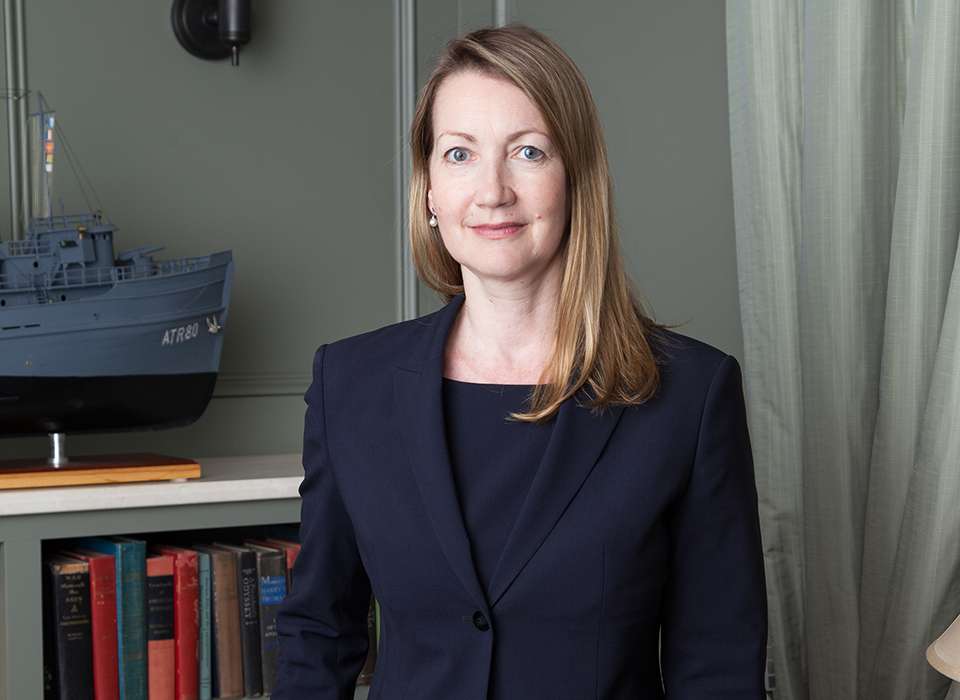
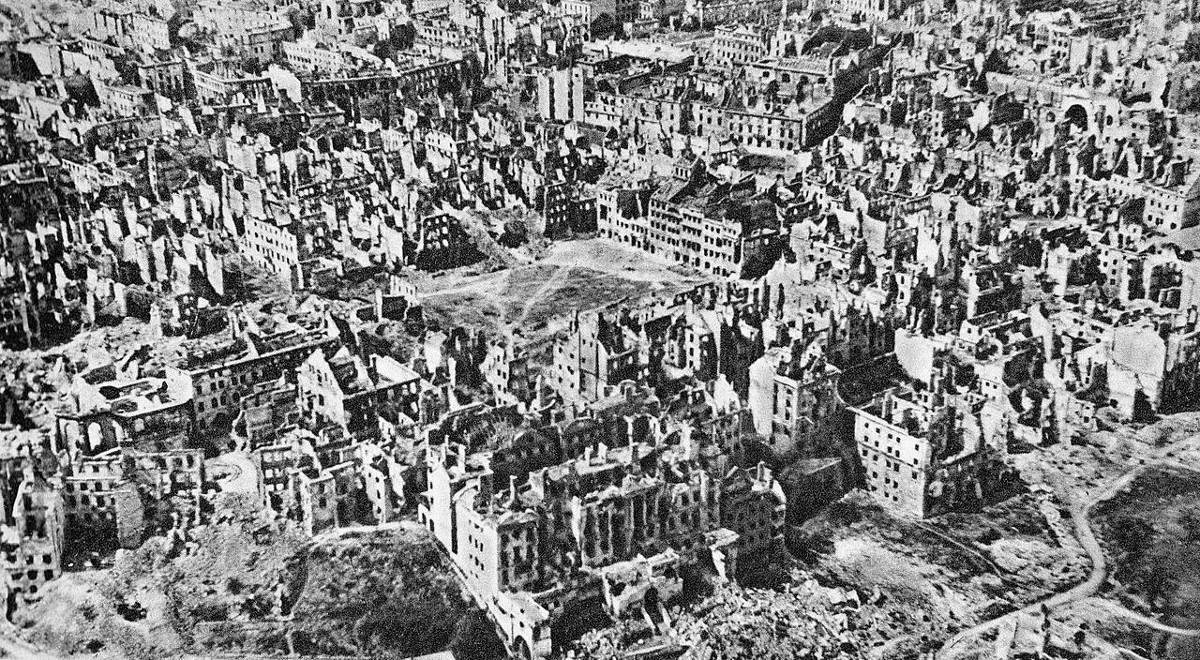
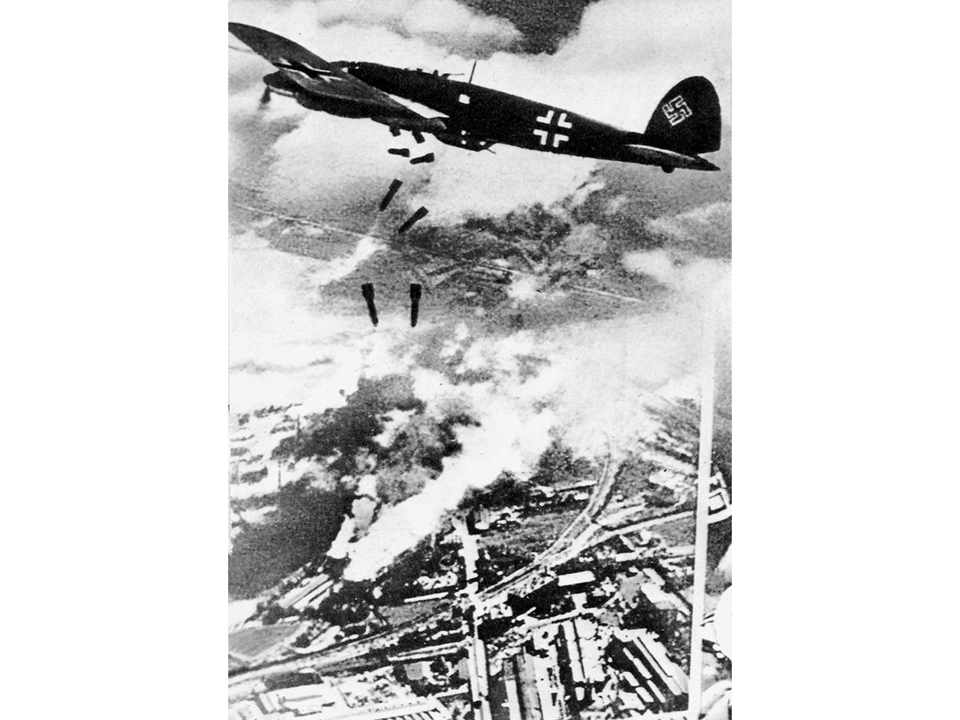
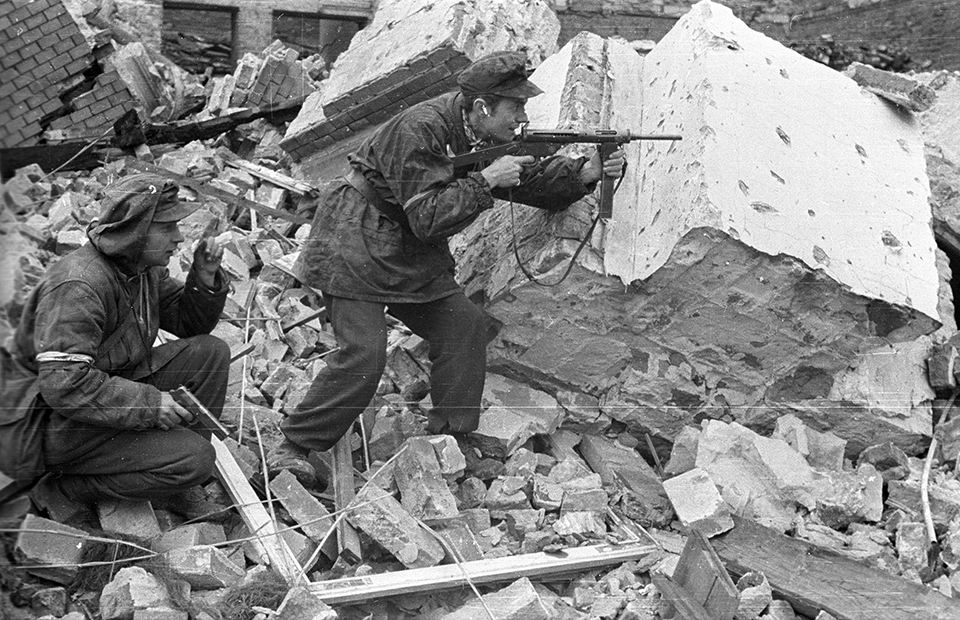
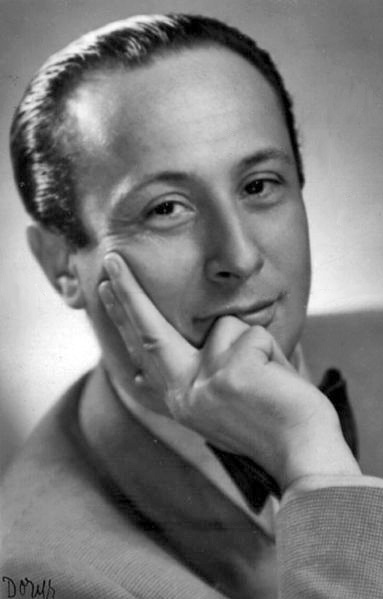




![Max Fuchs, New York City cantor, sings as Rabbi Sydney [sic] Lefkowitz, Richmond, VA, conducts the first Jewish services from Germany.](/sites/default/files/styles/max_650x650/public/2025-10/image1.jpg)



